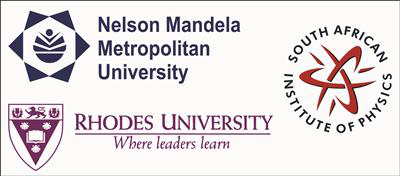Speaker
Would you like to <br> submit a short paper <br> for the Conference <br> Proceedings (Yes / No)?
Yes
Main supervisor (name and email)<br>and his / her institution
Pro. Francis Dejene
Level for award<br> (Hons, MSc, <br> PhD, N/A)?
Ph.D
Apply to be<br> considered for a student <br> award (Yes / No)?
No
Abstract content <br> (Max 300 words)<br><a href="http://events.saip.org.za/getFile.py/access?resId=0&materialId=0&confId=34" target="_blank">Formatting &<br>Special chars</a>
Abstract
In recent years, luminescent nanocrystals (NCs) doped with rare earth ions were paid more attention because of their interesting luminescent properties. Cubic Y2O3:Eu3+ is one of the most important commercial red phosphors, which can be used in fluorescent lights, cathode ray tubes, plasma display panel, and field emission display. Yttrium oxide (Y2O3) has been investigated widely as a host material for rare-earth ion doping in optical applications on account of its excellent chemical stability, broad transparency range (0.2 to 8µm) with a band gap of 5.6 eV, high refractive index, and low phonon energy. Furthermore, the similarities in the chemical properties and ionic radius of RE ions and Y2O3 make it an attractive choice as a host material. In the present study, a series of red emitting phosphors Y2O3:Eu3+: Ho3+ was prepared by sol- combustion method. The luminescence, excitation, optical absorption, structural and morphological properties of the phosphor have been studied.
The X-ray diffraction patterns show cubic phase crystal structures. Scanning Electron Microscopy show agglomerates of crystalline particles having spherical shapes with average size in the range of 40 to 80 nm. The photoluminescence measurements indicate red emission of Eu3+ doped Y2O2S powders with the most intense peak appearing at 621 nm, which is assigned to the 5D0-7F2 transition of Eu3+. Y2O3:Eu3+, Ho3+ phosphor shows a red-emitting long afterglow phenomenon, and the Eu3+ ion are the luminescent center during the decay process. It was observed that ET took place between Ho3+ and Eu3+ ions. The dependence of photoluminescence (PL) spectra and decay times on doping concentration has been investigated. This phosphor can have applications in the field of photonic technology.
Please indicate whether<br>this abstract may be<br>published online<br>(Yes / No)
Yes

